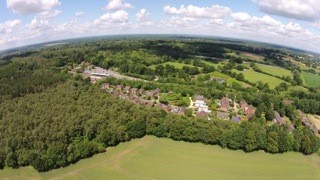Top planning QC, Peter Village has produced a devastating legal opinion on Hart District Council’s Local Plan process and pronounced that they are in a “hopeless position“. Hart Council have received this opinion, but have refused a meeting to discuss ways of improving the plan. In fact, at last night’s council meeting, council leader Stephen Parker dismissed the report as “just one opinion among many”.
It is imperative that Hart gets a high quality local plan in place quickly and fends off the demands from Surrey Heath and Rushmoor Borough Councils to build an extra 3,100 houses in Hart. The council’s attitude displays a staggering level of arrogance and complacency that can only lead to more delays and extra costs to get the plan right. We urge all voters to press their council candidates to push to get the Local Plan process back on track by adopting our 5-point plan and dropping all ideas of a new town in Hart District.
The essence of the opinion is:
- The Regulation 18 public consultation in the autumn of 2014 addressed housing options and did not consider other vital issues such as employment, retail, transport and infrastructure.
- Hart District Council said in April 2014 that they would conduct a second Reg 18 consultation in March 2015, which they have since dropped and now intend to proceed directly to a Regulation 19 consultation on the Draft Plan for Final Inspection. This plan is likely to fail because either the Local Plan will not contain all the elements it should, or they will not have consulted on all of the things they should consult upon.
- Hart have not consulted upon the demands from Surrey Heath and Rushmoor that Hart build 3,100 houses for them.
- Hart have not considered a medium growth “policy on” scenario of not meeting the full housing need on environmental grounds.
- Hart have not properly considered the brownfield capacity of the district, highlighting that the capacity could be up to 3,500 dwellings, far more than the 750 dwellings Hart is still insisting upon.
Reader may recall that set out a 5-point plan to address these issues and this is summarised below:
- Create a medium growth scenario with a lower housing requirement than the current high growth scenario to give an option to reduce the environmental impact of development.
- Create a formal brownfield option and invite a competition to design the best way of using our brownfield land.
- Do the work and consult upon the additional elements of a proper Local Plan such as employment, education, transport, retail and other infrastructure.
- Consider the Environment and Landscape by carrying out proper habitat studies and landscape character assessments.
- Fix the management and governance problems within Hart Council that have resulted in the past failure and current hopeless position.
If you want to press for change, please sign our petition:
The full Legal Opinion and our latest Press Release can be found below:


This has been covered in the Basingstoke Gazette.








